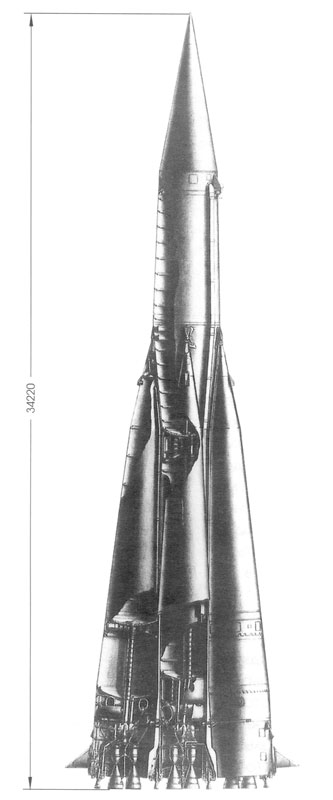The Space Age Turns 50 - Ideas of Space Flight from the Early 20th Century
Korolev, the R-7, and Sputnik

Sergey Korolev
1907-1966
(from: http://www.nmspacemuseum.org/halloffame/images.php?image_id=15)
The identity of the Chief Designer of the Soviet rocket program remained a secret until after his death in 1966. Though the details of his death are unclear, the Soviet paper Pravda printed the obituary of Sergey Korolev a few days after his death. His accomplishments in the development of the rockets used in the early Soviet satellite and manned programs were described and Korolev was given a state funeral.
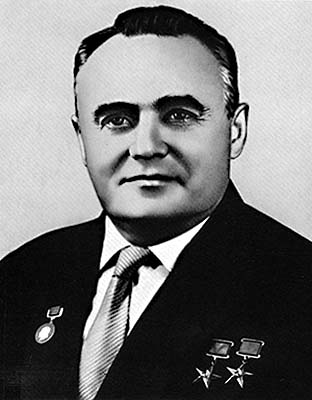
(from: http://history.sandiego.edu/gen/USPics38/korolev.jpg)
In 1934, Korolev published Rocket Flight in the Stratosphere. He spent the 1930s on rocket work for the military, but was convicted of subversion in 1938 and spent six years in a Soviet gulag. Following the war, he was involved in research on captured German V-2s. The Soviet rocket team developed what would become the workhorse of the Soviet space program - the R-7 rocket.
The R-7 was developed as an intercontinental ballistic missle, but it's primary (and almost exclusive) use would be for launching satellites. The R-7 which launched the first artificial satellite was 92 feet tall.
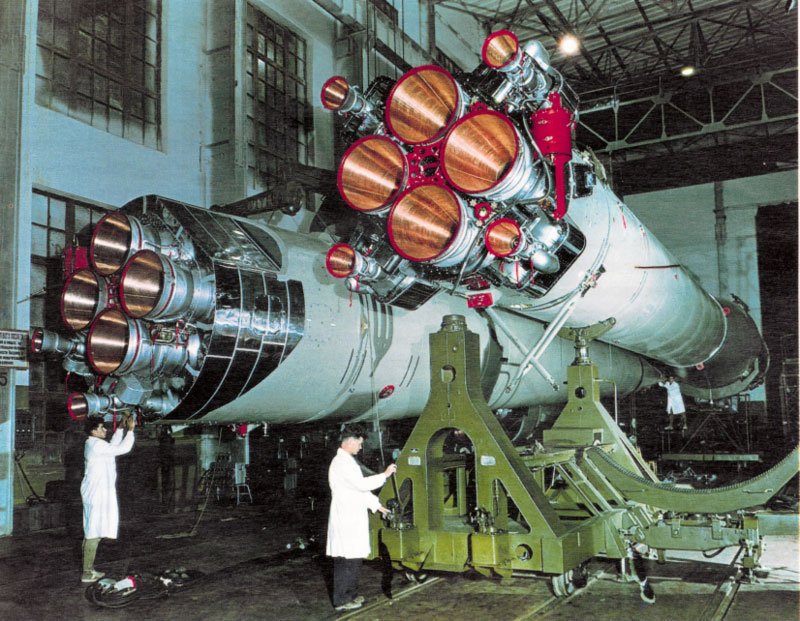
(from: http://www.energia.ru/english/energia/launchers/rocket-r7.html)
Instead of having different stages mounted on top of each other, there were four strap-on boosters mounted to the lower part of the rocket. At lift-off, the rocket weighed 591,000 pounds. These details were not made public until years later.
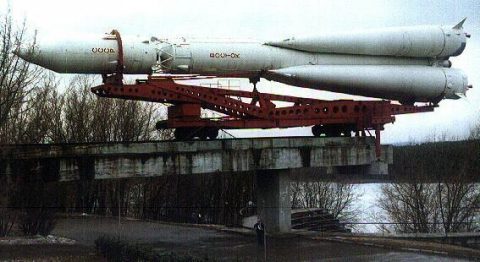
Vostok Kaluga Museum.
In fact, the first time the Soviet Union released images of an R-7 rocket was when one was put on display at the 1967 Paris air show.
On August 30, 1955, the Soviet Acadamy of Sciences recommended the launching of an artificial satellite. The Soviets were aware of American attempts and failures in the launching of rockets.
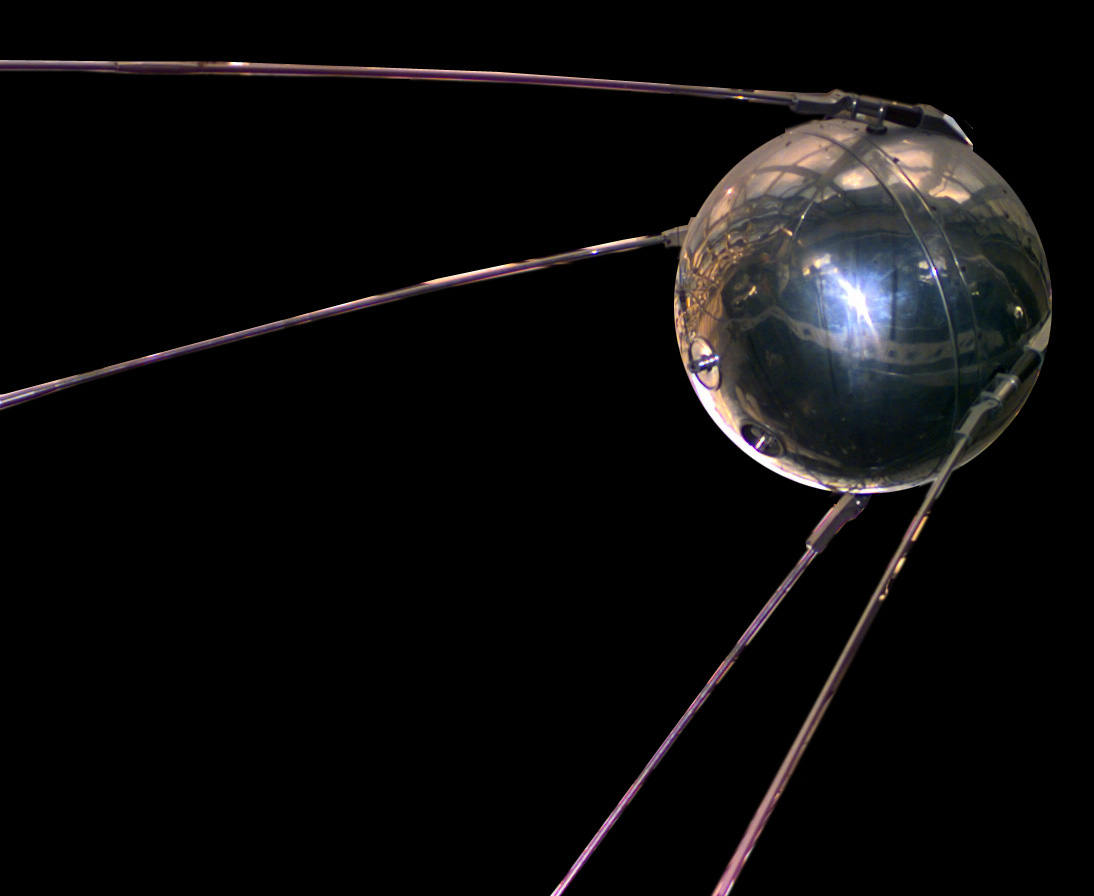
(from: http://nssdc.gsfc.nasa.gov/planetary/image/sputnik_asm.jpg)
They designed a simple 184 pound satellite which they refered to as PS-1 for "prosteyshyy Sputnik."
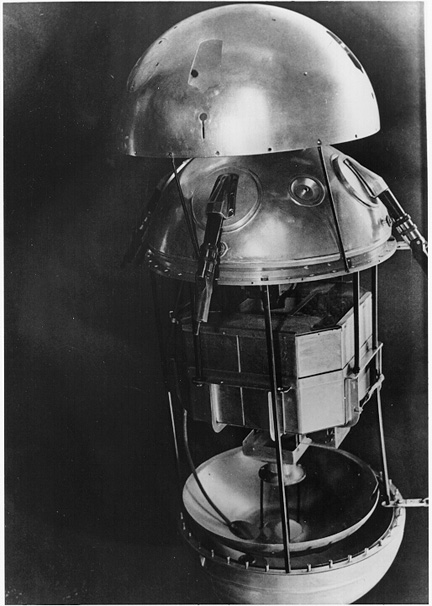
(from: http://nssdc.gsfc.nasa.gov/planetary/image/sputnik1_exp.jpg)
The main body of Sputnik was a shiny metal sphere about 2 feet in diameter. It had four long antennas, two eight feet long and two nine-and-a-half feet long.
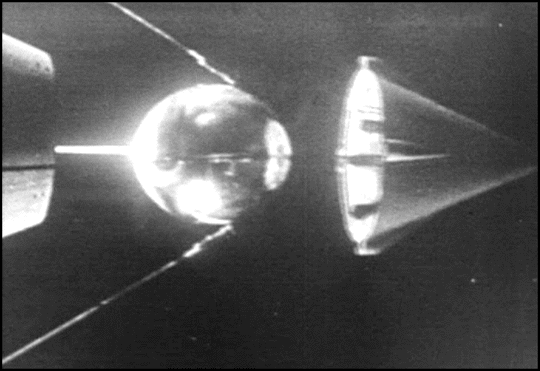
(from: http://www.turnerlearning.com/cnn/coldwar/sputnik/sput_dis.html)
The antennas were spring loaded and whipped out when the shroud covering them was ejected. Sputnik had two radio transmitters and instruments to measure temperature and pressure within the satellite.
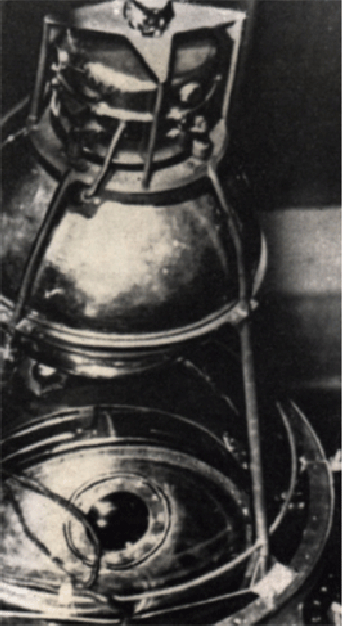
(from: http://aboutfacts.net/ AirSpaceCraft/AS38/sputnik.jpg)
Over half of the weight of the satellite was due to the batteries which powered it.
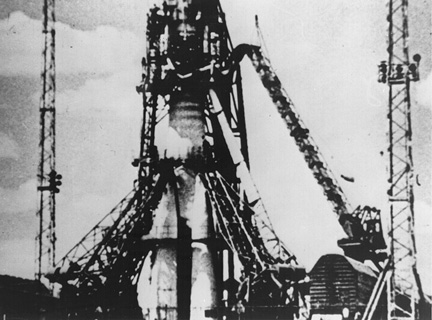
(from: http://history.nasa.gov/sputnik/sputlaunch.jpg)
As described in the introduction, Sputnik 1 was launched on the evening of October 4, 1957 aboard an R-7 rocket.
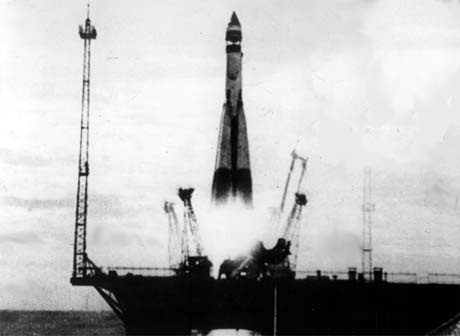
(from: http://www.nytimes.com/partners/aol/special/sputnik/launch.1.jpg.html)
Its orbit was at an angle of 65 degrees to the Earth's equator. At the low point in its orbit (the "perigee") it was at an altitude of 141 miles and at the high point (or "apogee") it was at 587 miles.
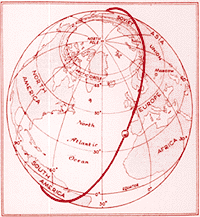
(from: http://www.nytimes.com/partners/aol/special/sputnik/sput-01.html)
It took 96 minutes for Sputnik to orbit the Earth.
One of the transmitters sent out a sequence of beeps at a frequency easily heard by amateur radio operators.
LIFE magazine described the transmissions in their October 14, 1957 issue as:
"An eerie, intermittent croak - it sounded like a cricket with a cold - was picked up by radio recievers around the world last week. It came from beyond the stratosphere and signaled an epochal breakthrough into the new age of space exploration."
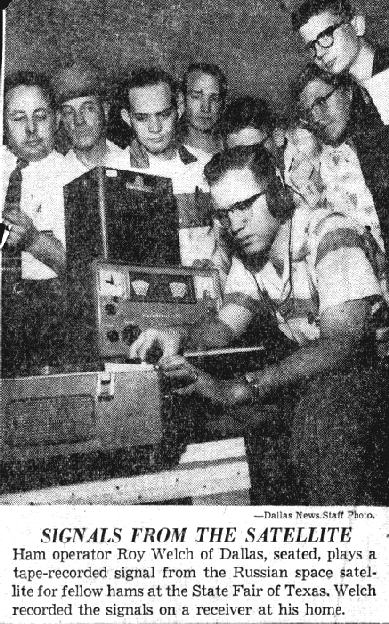
(from: http://www.amsat.org/amsat/ features/sounds/firstsat.html)
Detection of the signal was easy and, no doubt, part of the Soviet Union's plan to let the world know of their success.
The batteries of Sputnik lasted for only three weeks and then the beeps stopped.
 Sputnik 1 reentered the Earth's atmosphere in January 1958.
Sputnik 1 reentered the Earth's atmosphere in January 1958.
Go to The U.S. Rocket Program and Explorer 1 section.



